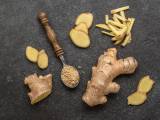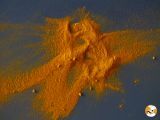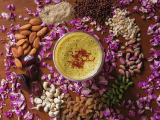What you eat could be the secret to relieving your menstrual cramps

For millions of women, the menstrual cycle is accompanied by an unwanted guest: dysmenorrhea. This medical term describes menstrual pain that can range from mild discomfort to disabling spasms that disrupt daily life. These symptoms, which include abdominal pain, fatigue, nausea and even migraines, affect more than 50% of women of childbearing age, according to studies by the World Health Organization (WHO). Although the intensity of the symptoms varies, their impact on quality of life is undeniable: lost work days, sleepless nights and postponed daily activities.
In this constant search for relief, an often underestimated tool is food. What we put on our plate could make the difference between an unbearable day and a manageable one. But what does science say about foods that help reduce dysmenorrhea symptoms? And, on the flip side, are there ingredients that could make them worse? It's time to explore how nutrition can become an aid in relieving period pain.
Foods that relieve dysmenorrhea
- Fatty fish: Omega-3 fatty acids, found in fish such as salmon, mackerel or sardines, have potent anti-inflammatory properties that can help reduce uterine spasms. According to a study published in the American Journal of Clinical Nutrition, consuming omega-3 can decrease the production of prostaglandins, compounds responsible for painful contractions.
- Green leafy vegetables: Vegetables such as spinach, chard or kale are rich in magnesium, a mineral that helps relax muscles and mitigate cramps. Research from the Journal of Women's Health shows that women with adequate levels of magnesium in their diet experience less menstrual pain.
- Antioxidant-rich fruits: Antioxidants such as vitamin C and flavonoids, found in blueberries, strawberries or oranges, combat oxidative stress that can exacerbate pain. In addition, their water content promotes hydration, which also relieves symptoms.
- Nuts and seeds (almonds, walnuts, chia, flax): These foods are sources of magnesium and vitamin E, known to reduce pain sensitivity. In addition, their essential fatty acid content helps reduce inflammation.
- Herbal infusions: Chamomile and ginger drinks or infusions not only soothe the nerves, but also have antispasmodic and anti-inflammatory properties. Ginger, in particular, has shown comparable efficacy to some medications in relieving menstrual cramps, according to a study in the journal Pain Medicine.
Foods that may worsen symptoms
- Ultra-processed foods: These products are often loaded with refined sugars and trans fats, which increase inflammation and worsen pain. Avoiding pastries, cookies and industrial snacks can make a big difference.
- Caffeine: Although a cup of coffee may seem harmless, caffeine can constrict blood vessels, intensifying cramps. Opting for caffeine-free herbal teas is a better option during the menstrual period.
- Alcohol: Alcohol consumption dehydrates the body and can increase prostaglandin levels, worsening spasms and inflammation.
- Whole dairy: In some women, dairy products high in saturated fats may aggravate inflammation. However, alternatives such as low-fat yogurt, rich in probiotics, may be beneficial.
- Excess salt: Excess sodium causes fluid retention, bloating and abdominal discomfort. Reducing your intake is key.



Comments